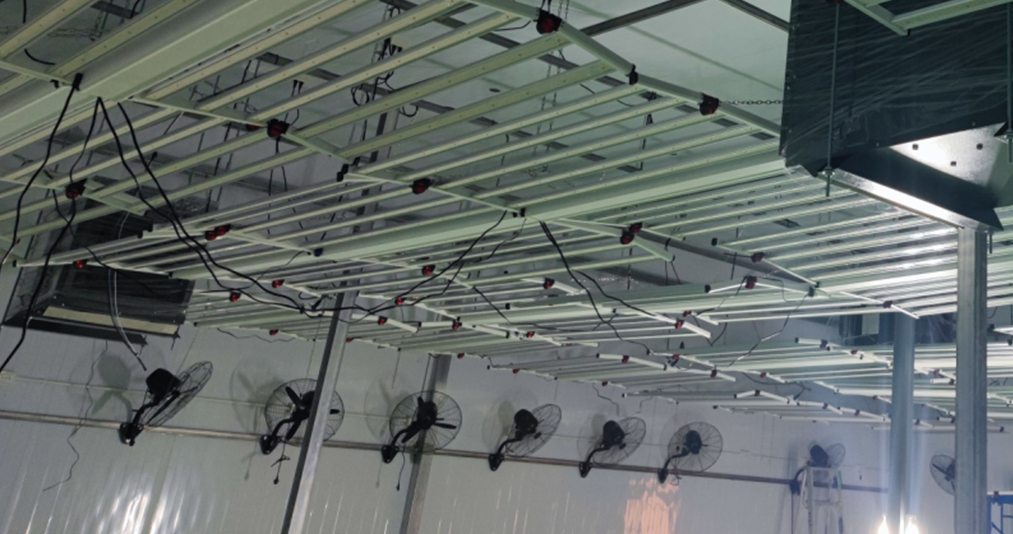What is The Right Number of Plants For My Grow Setup?
2021-01-14
“How many plants can I fit into this particular grow setup?”
We hear this question a lot, especially from first-time growers hoping to make the most of their space.
It’s an understandable question. You know the plants are going to get bigger, so you can’t cram containers together. But you also don’t want to lose an opportunity for maximum yields.
The first thing to understand is that there is no exact equation for the “right” number of plants for your space. The size of your plant is variable depending on the amount of time spent in veg. The longer you veg, the larger your plant will be before switching to flower (unless you are growing auto-flower plants). Some growers prefer very large plants and might only have one plant per light in a 4X4 space. Other growers prefer a “Sea of Green” approach with many small plants in the same space 4X4 space. Most growers prefer something in between these two extremes with around nine plants in a 4X4 grow space. This will give you about one square foot per each plant. Auto-flower plants will always be the same size as they do not have a veg period. Auto-flower plants will flower automatically based on a fixed time schedule. The size of auto-flower plants will depend a lot on the specific strain.
Obviously, the number of plants you grow will depend on the amount of grow space you have available. In an open room with a high ceiling it is possible to grow very large plants similar to outdoor. In a grow tent you need to be careful that the plants do not grow too tall and get too close to the lights. It is generally not a good idea to have plants crowded together where leaves are touching or plants are shading each other but this is not always possible in smaller spaces.
But in all honesty, you should consider more than just the amount of space available to you when deciding how many plants to grow.
We’re going to make this really simple with a step-by-step guide for determining the best number of plants for your grow setup. Each step will help you narrow down the possibilities.
Let’s start with the non-negotiable consideration.
Step 1: Find Out if There are Legal Restrictions for Your Grow Setup
The laws regarding both home and commercial grows are relaxing all over the country. Nevertheless, most states still enforce restrictions on cultivation.
For example, California low dictates that home growers can cultivate no more than six plants intended for recreation. In the case of medicinal marijuana, you are free to grow in a 100-foot area of your residence.
In Alaska, each adult over the age of 21 is permitted to possess up to six plants. However, only three of those plants can be flowering at one time.
Restrictions for a commercial grow setup can be even more complicated.
So, before you decide how many plants you want to grow, check to see what your local laws say. Then work from that number.
Step 2: Measure the Size of Your Grow Room or Tent
Next, consider the measurements of your grow room, grow tent, or grow facility. Determine how many plants you can reasonably fit without crowding them.
A general rule of thumb is to allow one square foot for each plant. That’s a minimum unless you use the Sea of Green method. Allow extra space if you want your plants to grow bigger than that. Pay attention to how much space you have above the lights. Most plants will double in height once they are flipped to flower. This might be less with many indica strains or more with many sativa strains. You don’t want your plant to grow into the lights where they will get light burn.
Step 3: Determine How Much Effort You Want to Put In
If your goal is to grow professionally, you can probably skip this step. If you want to turn a profit, effort is a given.
On the other hand, if you’re creating a home grow setup, your level of interest in this hobby should come into play.
The more plants you have, the more time you’ll spend transplanting, monitoring and caring for your plants each day. If you have your space really packed, you may also find the work more frustrating, as it’s harder to reach the plants in the back.
However, if you expect to enjoy the time you spend on cultivation, a larger crop can be the more rewarding choice. It really depends on how much you want to put into this endeavor.
Step 4: Consider Your Harvest Goals and Priorities
The number of plants you grow influences not only the process of cultivation, but also the outcomes. Here are a few helpful questions to ask yourself:
---Am I Eager to Get to Harvest?
The larger the plants you have, the longer the grow cycle takes. This is because those few larger plants need extra time to grow in veg, develop, and fill out the available space.
If you want to get through veg and onto flower faster, you should grow more smaller plants.
---Do I Want Higher Yields?
If high yields are a top priority, go with the maximum number of plants. Between a higher volume of buds and a faster harvest, a high volume grow setup pays off bigger and sooner. You may also get more harvests per year with shorter veg times.
This can especially feel like a victory when you consider the resources that go into it. You get more bang for your buck in terms of equipment costs, energy consumption, and time.
---Do I Want Variety?
If you want to experiment with different strains, you have to grow more plants.
However, it should be noted that different strains often have different needs in terms of nutrients, irrigation, and light intensity. So, diversifying your crop requires a little extra work and attention on your part.
Step 5: Check the Capabilities of the Light You Chose for Your Grow Setup
Do you know the footprint of your LED grow light? This should be a top consideration. If you grow more plants than your grow light covers, you are going to have a disappointing harvest.
Say, for example, your grow setup is a tent with a single LED grow light providing a 3’ x 3’ coverage area. You cannot grow more than nine average size plants in that space with that grow light. Even if you see light fall outside those perimeters, it is not quality light.
Please turn to our team from Light On Technology. We’re always here to help you out with right selection of LED grow light as well as increasing your yield.







